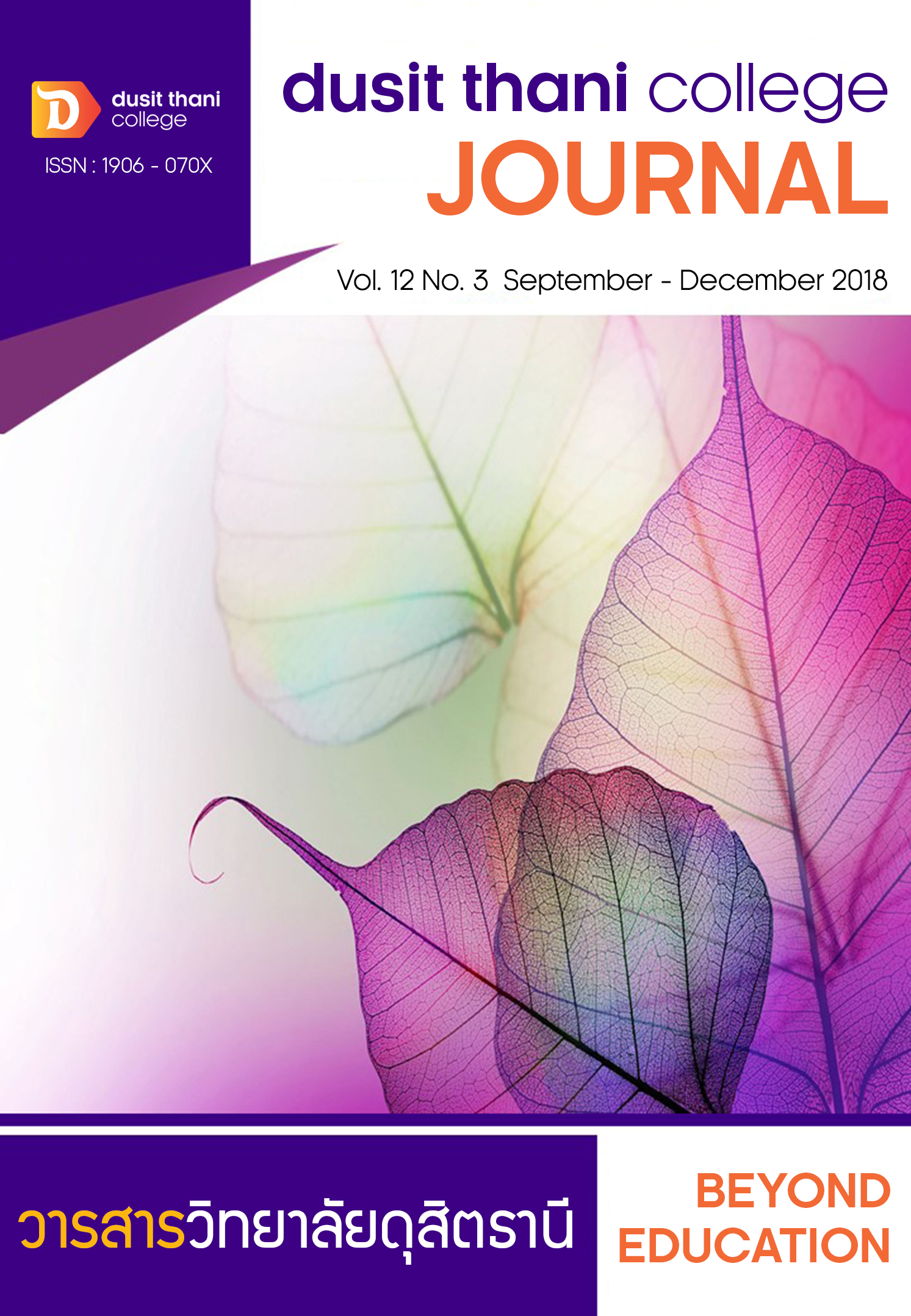Teaching Thai Language in Refugee Camps along Thai-Myanmar Border
Main Article Content
Abstract
This paper aims to find out usefulness and effectiveness of teaching Thai language in Myanmar refugee camps along Thai-Myanmar border as perceived by the trainees and the refugees. Enable to get a positive perception of the trainees that learning Thai language is useful for them, an effective teaching method must be constructed. To meet the objectives, an assessment on teaching Thai language was made in the 8 refugee camps. The sample size was 240. There were two parts in the questionnaire. The first part dealt with the demographic variables and the second part dealt with the perceptions of the respondents on usefulness and effectiveness of the literacy training that they were attending.
Simple statistics, for demographic variables such as gender, aged groups, length of stay, skills in reading and writing and levels, mean, and percentage, was used to find out the perception of the respondents in different levels. A pair sample test and one way Analysis of Variance (ANOVA) were used to compare the responses of the respondents in different levels on usefulness and effectiveness of the training.
It was found out that main reason for higher drop-out rate, which is considered to be an indicator of ineffectiveness of teaching, was due to the trainees interested in resettlement in a third countries. This problem was also happened in in the camp formal schools. If we consider the effectiveness and usefulness of Thai language training accordingly with the performance of the trainees, it was found out that skills of the trainees of all levels in reading and writing skills was in average. It means that teaching process of this project could not significantly improve the skills of trainees after attending a certain level.
For further study, researchers should focus on the ways of life of the refugees who could not attend the basic education in their country and lack of enthusiasm in learning literacy. It means that teaching and learning process should be changed accordingly with their concepts.
Article Details
Article Screening Policy
- All research and academic articles to be published must be considered and screened by three peer reviews in the relevant field / article.
- All articles, texts, illustrations and tables published in the journal are the personal opinions of the authors. Editors don't always have to agree. And no responsibility whatsoever is the sole responsibility of the author.
- The articles to be published must never be published. Where did you first publish? And not in the consideration of other journals If the audit found that there has been a duplicate publication It is the sole responsibility of the author.
- Any article that the reader sees as being plagiarized or impersonated without reference. Or mislead the work of the author Please let the journal editor know it will be your greatest blessing.
References
2. Su-Ann, O. (2010), “Education in Refugee Camps in THAILAND: Policy, Practice and Paucity” EFA Report, 2010 UNESCO
3. Premjai. V. (2011-2013) “The Challenge of Education Policy for Migrant Children in Thailand from Security Standpoints” Center for Southeast Asia Studies, Kyoto University
4. Sarah. D. P. (2015), “The Educational Experience of Refugee Children in Country of First Asylum” Migration Policy Institute. Washington D.C.
5. Hasam. A, Et. Al (2014). “Ensuring Quality Education for Young Refugees from Syria (12-25 years old). Refugee center. Oxford Department of International Development. University of Oxford.
6. Miron. G. and Applegate. B. (2000). “An Evaluation of Student Achievement in Edison Schools Opened in 1995 and 1996” The Evaluation Center. Western Michigan University.
7. aylor. S. and Sidhu R. K. (2009). “Supporting Refugee Students in Schools: What Constitutes Inclusive Education?”
8. Habib. M. (2011). “An Exploratory Analysis of Education Management for the University.” Faculty of Business. American International University. Bangladesh.
9. Kagaari. J. et. al. (2010). “Performance management, Practice, Employee Attitudes and Management Performance.” International Journal of Management. Vol. 24, no.6
10. Stark. B. P. and Freishtat. R. (2014). An Evaluation of Course Evaluations.” University of California, Berkeley. USA Appendix 6 of “Statistics; A Fresh Approach” by Donald H. Sanders. McGraw-Hill, 1990
11. Taro. Y. (1967). “Statistics: An Introductory Analysis. 2nd. Edition. New York. Harper and Row. Report on “Effectiveness and usefulness of Thai Language Training in Myanmar Refugee Camps.” Office of Non-Formal and Informal Education, Ministry of Education. (2007)


